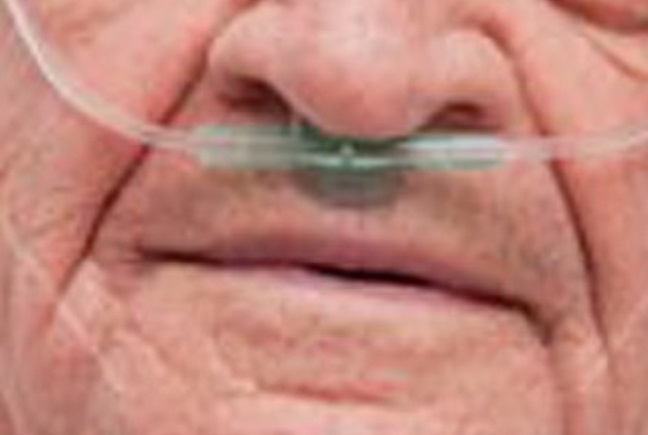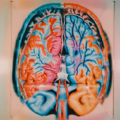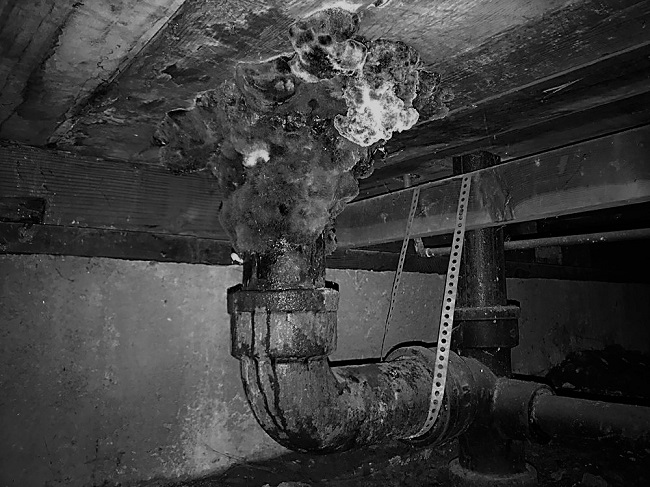I live in a retirement home and I see many residents who are receiving nasal oxygen, so I am going to try here to address the reason. They may have been diagnosed with either heart disease or lung disease and they have probably been observed clinically to be “short of breath”. Of course, I do not know the specific reason for a given individual receiving this treatment, but does the average patient understand why he or she has to tolerate this inconvenience? I strongly suspect that they have merely been told that they need oxygen administration without explaining the underlying reason. Generally speaking, most people take for granted that they are alive and have little interest in why or how, unless their health becomes threatened. Obviously, when nasty things start to occur, they ask a physician why it is happening to them and the physician tries to diagnose the affliction. It usually winds up by the patient being told that it is disease A or B and a superficial description of the disease is provided. Each disease is regarded as having a specific treatment and a specific cure that is usually being sought by a drug company. The most up-to-date drug is offered. Unfortunately, with the exception of bacterial infection, most drugs only treat the symptoms and do not address the underlying cause. Modern research focuses almost exclusively on genetics and for the most part little consideration is given to prevention other than making a diagnosis of early disease. So why are these people receiving nasal oxygen?
Why Do We Need Oxygen?
Of course, we all understand that our environment must supply us with oxygen, water and food, without any of which we die. Although I have written about oxygen utilization in many posts on this website, it bears repetition because of what I want to say about nasal oxygen administration as described above. First of all, it must be stated that the main three gases in air are nitrogen, oxygen and inert gases. Seventy-eight percent of air is made up of nitrogen, 21% is oxygen, just under 1% is argon and the remaining part is made up of other gases such as carbon dioxide and water vapor. In other words, our oxygen intake is dosed. Too much oxygen is as lethal as none at all, illustrating the wisdom that was propounded in ancient China called Yin and Yang, not too much and not too little. The thing that always amazes me is the concise nature of the natural world and how we should fit into it. The more I get to know about the human body the more I realize how little we know. However, we do know what we do with oxygen. It is called oxidation.
Understanding Oxidation
It is surprising to me that many people appear not to understand that when a fuel burns, it is because the fuel is combining with oxygen. The result is the production of energy in the form of heat, the simple physics that we learned in school. The word oxidation is defined as “cause to combine with oxygen”. But consider that a piece of newspaper will not burst into flame by itself. It has to be ignited. If we use a match, the heat generated from striking it on a rough surface is enough to make it burst into flame and that energy in the form of the flame is transferred to the newspaper. What we are looking at is simply the transfer of energy from one action to another. Even striking the match requires the energy of the individual who performs it. But there is another factor that comes into play here. The newspaper will produce what we call ash, representing the fact that the newspaper has not been completely consumed (oxidized). I am providing these simple principles to explain now that this is exactly what happens in the body. The principles are identical: the mechanisms are different.
Cellular Oxidation
Starting with first principles, as we breathe, our lungs are taking in air and extracting oxygen from it. The oxygen is transferred into the bloodstream and picked up by combining with hemoglobin that coats red cells. This represents a transport system and the oxygen has to be delivered to each of the 70 to 100 trillion cells. This in itself is an amazing representation of the blood circulation. The deoxygenated blood is transferred to the venous circulation and transported back to be re-oxygenated. It is now that the process of oxidation takes place in the cells that have received the oxygen. To put it as simply as possible, glucose, the primary fuel, combines with oxygen to yield energy that drives the function of the cell in which the oxidation takes place. Just like the analogy of the newspaper, the combination of glucose with oxygen has to be “ignited”. Thiamine and other vitamins and minerals are the equivalent of a match. Carbon dioxide and water are the equivalent of ash from the newspaper. They have to be got rid of and so they are expired in the breath. Gasoline in a car engine has to be ignited so the explosion in a cylinder might be referred to as oxidation. The smoke in the exhaust pipe is the “ash”.
Nasal Oxygen and Hypoxia
It is my experience is that the use of nasal oxygen, although completely correct in itself, seems to be associated with ignorance of the fact that the sufferer is probably lacking the vitamins and minerals that enable the oxygen to be utilized in the body. Indeed, the lack of vitamins and minerals may be the main issue in the underlying cause of the disease, a fact that is flatly denied by the vast majority of physicians. The word for lack of oxygen in medical literature is hypoxia. The effects of thiamine deficiency, because it causes exactly the same symptoms, is referred to as pseudo-hypoxia (false lack of oxygen). In reality, the symptoms of the patient are caused by lack of oxidation, resulting in lack of cellular energy and consequently, their loss of function. Using the above analogy, it would be like holding a piece of newspaper and expecting it to burst into flame spontaneously. The most recent medical literature is full of manuscripts reporting the relationship of thiamine deficiency with chronic disease, even cancer, and various forms of traumatic surgery. It is not sufficiently recognized that the widespread ingestion of empty carbohydrate calories easily induces inefficient oxidation. This is but another reason why Dr. Marrs and I have written our book “Thiamine Deficiency Disease, Dysautonomia and High Calorie Malnutrition“, available at Amazon books. ‘
Conclusion
Why do so many individuals require nasal oxygen? With the present thought process, the patient is considered to have a condition that would benefit from its administration, perhaps heart or lung disease, operating on the present disease model. Physicians are not really thinking in terms of oxidative metabolism as the underlying mechanism. The point that we are trying to make here is that no amount of extraneously supplied oxygen will be effective unless the vitamins and minerals are present in sufficient quantity for the oxygen to be used in the creation of energy. Oxidation requires the presence of glucose, oxygen and the requisite vitamins and minerals and deficiency of any one of the three will be responsible for the symptoms.
We Need Your Help
Hormones Matter needs funding now. Our research funding was cut recently and because of our commitment to independent health research and journalism unbiased by commercial interests we allow minimal advertising on the site. That means all funding must come from you, our readers. Don’t let Hormones Matter die.
Yes, I’d like to support Hormones Matter.
This article was published originally on April 5, 2018.














Dear Dr. Lonsdale – is there any unsafe upper limit to Ttfd? I feel best on 600 to 800mg a day. Is this OK? Can I take this while trying to have a child?
O for Heaven ‘s sake, eat organic food (God made) that includes fresh fruit (not canned).
Dr. Lonsdale,
My diet for the past year consists of a balanced variety of organic vegetables and fruits, low carb dishes and about 3 times a week various meats, everything home cooked and an occasional dark chocolate, other sweets only rarely in social situations.
To everyone around me it seems like a great diet, yet somehow unlike others with a worse diet I suffer all these effects after Covid.
So naturally, I’m perplexed as to what I’m doing wrong, whether something in my diet, like too much oxalates or maybe the 3 mile walks in the park with a slightly dysfunctional ANS did it for me. Now I’m mostly bed ridden.
It it so demoralizing to realize that I got so much worse while doing all the seemingly right things. Whatever it is, it means I have to struggle more than others to balance myself out and it’s hard to pinpoint what the issues are, but I am hoping that the answer lies with thiamine.
Respectfully
Ema
Don’t know. You shouldn’t be using them anyway
Do polyphenols block thiamine absorption? This PubMed article says they might, https://www.ncbi.nlm.nih.gov/pmc/articles/PMC6160559/
Thank you so much for your response. I am navigating the site but there is so much to go through and my brain fog makes it difficult.
Not sure what slowly increase means, is (7) days considered enough time at 50 mg to now start increasing to 100mg? Increase at 1 week intervals? It’s hard to judge by my symptoms because in my case it’s a yoyo of a good day then a bad day, and this only applies to sitting, once I get up head presure, dizziness, tinnitus and Adrenaline dumping start to happen.
I never drank alcohol, but I will stop eating fruit and I guess this means no carbs either ? I really don’t know what to eat now until getting better.
Veggies have oxalates, carbs turn into sugar, meats increase stress on Stick for now with fish, eggs and dairy, gelatin?
Could the new magnesium L-threonate that crosses the BBB also be beneficial in this case? Any further guidance would be a tremendous help. I also can’t sleep, and can’t properly think, overwhelmed by everything.
Respectfuly,
Ema
I am desperate for your help, for the past year right after I had Covid, I’ve been dealing with heart symptoms that have now culminated into what looks like Hyperandrenergic Dysautonomia. After 2 weeks with COVID, I experienced sharp pain in the heart which after a month of symptoms a cardiologist thought to be Pericarditis and prescribed high dose Ibuprofen and Colchicine.
The sharp pain resolved somewhat after 4 months but I persisted with a high heart rate at rest and even higher when walking but with low blood pressure. I would also be very tachycardic after meals.
Since June, I have been trying to walk 3, 4 times a week at the park about 3 miles. My walking HR was 138 (I am 42 years old) , then starting in November 2021 I suddenly felt my heart rate skyrocket suddenly to 168, called 911 and ECG was good. Since then, this happened a few more times, each time during walking but I was ok after resting.
Had a cardiac MRI which came back normal and cardiologist first mentioned POTS / Dysautonomia as a possibility. Once I started reading about it I decided to do any physical activity on a recumbent bike and the very first time with my HR barely around 128 bpm I had another episode where heart jumped to 160 several times but this time I experienced adrenaline dumping that has been almost CONSTANT for the past 17 days regardless of sitting or standing and severe insomnia.
I am currently taking 20mg Propranolol 3 times a day and it barely helps.
I started Lipothiamine from Cardiovascular Reserch and have been taking it for the past 5 days, just a 50mg pill a day at 2 Pm. Can’t tell if I have paradox or not since symptoms are the same.
I really need help with doses, to know when to start increasing the dose and to what dosage and also what dose of Magnesium Taurate to take and when?
If to take at the same time, before or after the Lipothiamine. Same for the B Complex, I have a Sprouts brand Coenzyme Methyl B Complex with paba, inositol, Q10 and alpha lipoic, is this a good blend/brand?
Which kind of Selenium should I add and how much?
What kind of DIET helps to absorb the Lipothiamine and speed up recovery ? I know of no sugar but Should I avoid all fruit for now, take it with or without food ?
Can you recommend a quality multivitamin? I read to avoid potassium when taking propranolol ? Do you also recommend high dose Vitamin C?
I know there’s so many questions but this condition is agonizing, pure hell, any helpful input will be a godsend.
Drop everything except Lipothiamine. Stop alcohol and sugar in ALL its forms. Slowly increase Lipothiamine, titrating it to symptom relief. Try to find the ideal dose. Increasing the dose from there will exacerbate symptoms. Read the posts on HM. It has all been said before!!